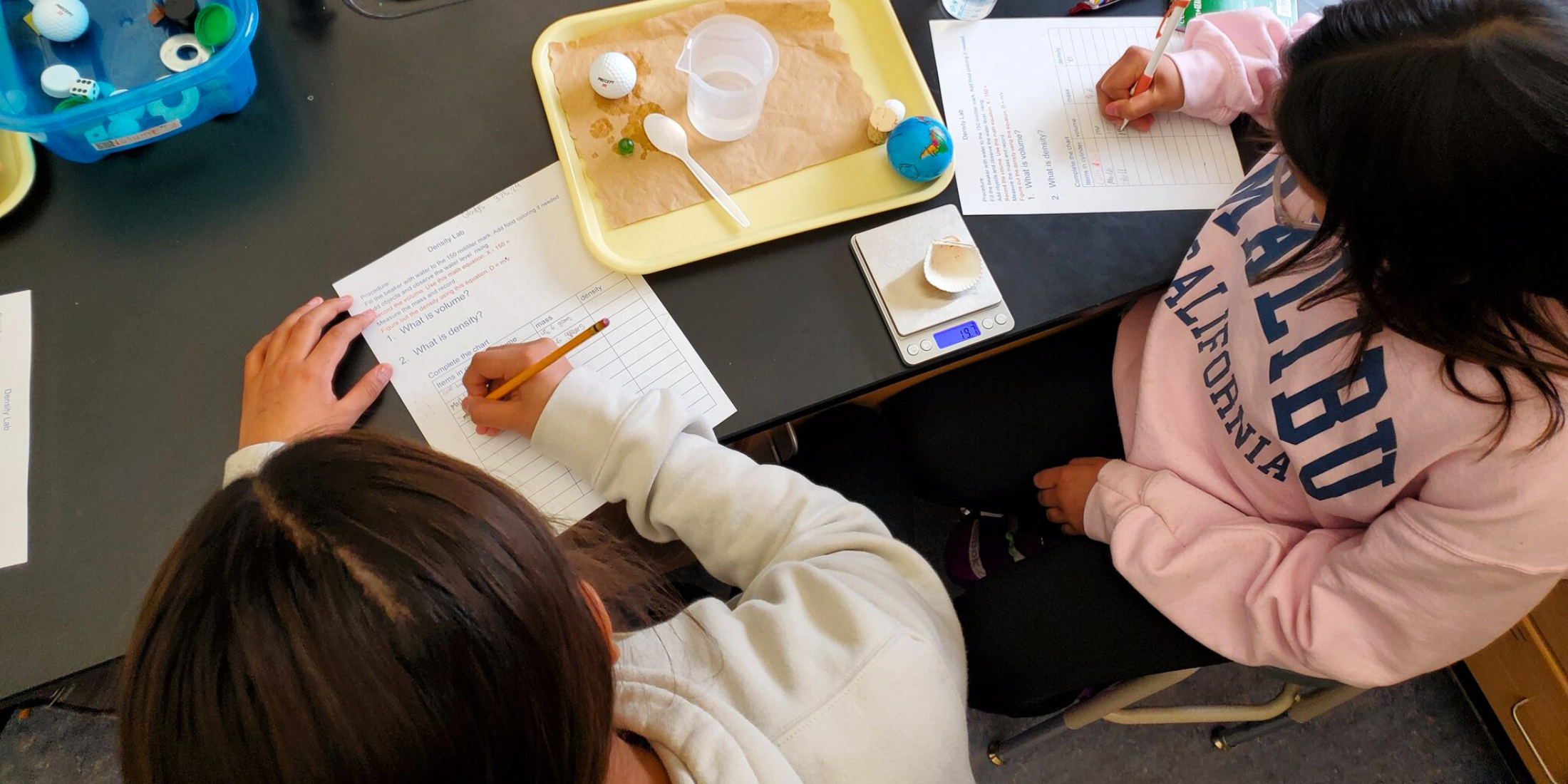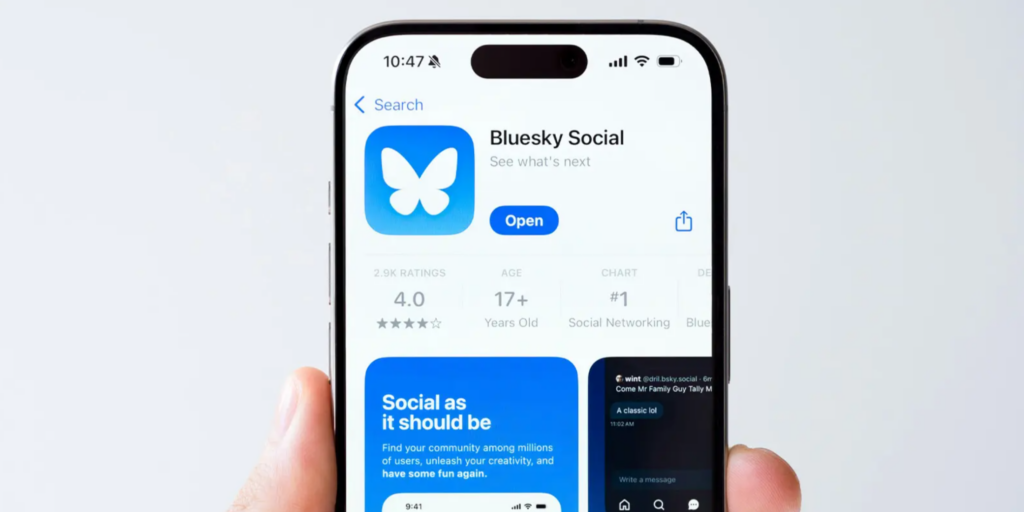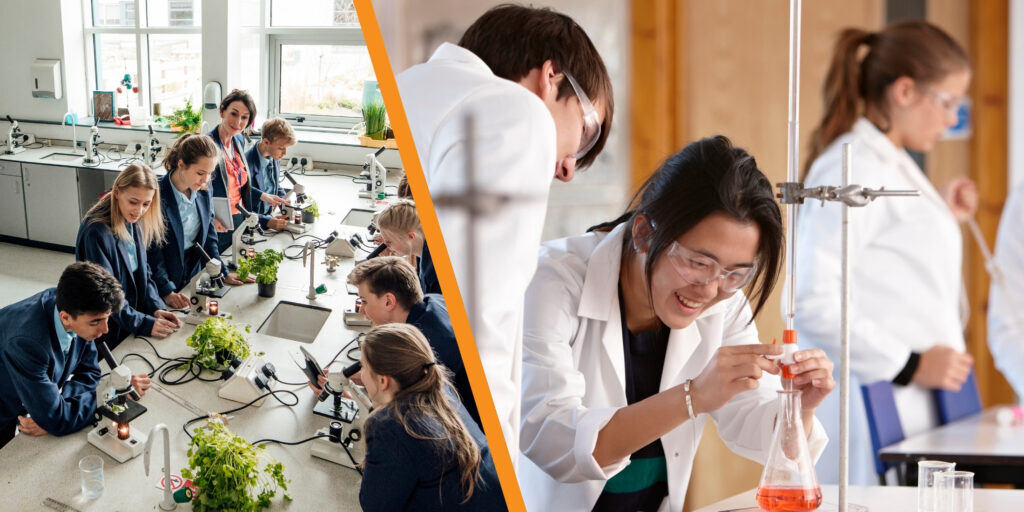Uncovering OpenSciEd Storylines
Uncovering OpenSciEd Storylines

Quick Take: Want to know more about storylines? We’ve got you covered. This post sheds light on OpenSciEd storylines, showing how their structure, routines, and content provide valuable guidance to teachers as they transform their classroom practice. Through a concrete example from OpenSciEd’s 6th grade Light & Matter unit, discover how storylines can work in your classroom and why not all storylines are created equal! Learn how Activate Learning's “all-green” EdReports-rated version of OpenSciEd provides the support teachers need to implement this innovative approach successfully. 🚀
Storylines. If you're a science teacher implementing the Next Generation Science Standards (NGSS) or exploring OpenSciEd, you've likely encountered this term repeatedly. But what exactly makes a storyline different from a traditional curriculum unit sequence? And more importantly, how do OpenSciEd storylines transform NGSS standards into engaging, student-centered learning?
For educators, the change in instruction may be a shift as they help students move from learning about to figuring out key ideas in science. The vision is compelling: students should be able to explain what they are trying to figure out and why they're investigating something beyond "because it's in the textbook”. However, bridging the gap between this vision and current practice in the classroom can seem a bit overwhelming.
This is where OpenSciEd’s storyline approach shines. Rather than simply repackaging traditional content into a narrative format, OpenSciEd has developed a phenomenon-based, equitable, student-centered curriculum with routines that make NGSS implementation manageable and effective. Their storylines don't just tell teachers what students are learning—they show how students will work through a series of investigations to figure out a puzzling phenomenon and, in doing so, develop an understanding of key ideas in science, practice essential science and engineering practices, and increase their science literacy. Storylines also help students build their own coherence about what they are trying to figure out. Sense-making from a student's perspective is key in any OpenSciEd unit.
Let's pull back the curtain on storylines and explore concrete examples of how storylines help transform instruction. Whether you're new to OpenSciEd or looking to deepen your practice, this exploration will show you why storylines aren't just a buzzword—they're a powerful tool for authentic science learning that OpenSciEd makes achievable in any classroom for all students!
What is a Storyline?
The NGSS envisions science classrooms where teachers support students in building and using science ideas to explain natural phenomena and solve real problems. This vision requires a dramatic shift from traditional textbooks and lesson plans—enter storylines. The NGSS storylines set the vision for organizing the NGSS standards into storylines, which represents a new approach to curriculum that brings three-dimensional teaching and learning to life. Groups like the Next Generation Science Storylines project took the vision one step further to provide tools and storyline resources to help teachers make this shift in instruction.
But what exactly makes something a storyline? Let’s take a look at some of the characteristics of storylines.
- Many teachers initially assume NGSS storylines are simply about presenting their usual content in a more engaging way. However, NGSS storylines fundamentally change how students interact with science concepts. Instead of learning content and then doing investigations to confirm understanding, students engage in genuine scientific discovery and content-area learning is done as they make sense of investigations positioned early in the learning.
- NGSS storylines are based upon a phenomenon or design challenge that draws students into the learning and gives the learning relevance. Students develop questions about the phenomenon and ideas for investigations, two science and engineering practices that are critical skills for problem solving. The storyline then sequences investigations to help students uncover the science concepts.
- Storylines are about students constructing their own understanding through connected investigations and evidence-building.
- True NGSS storylines, like those in OpenSciEd, integrate all three dimensions of the standards (science and engineering practices, crosscutting concepts, and disciplinary core ideas) while maintaining student questions as the driving force.
Anatomy of an OpenSciEd Storyline: A Closer Look

[Students at Meskwaki Settlement School learning new ways of doing science with OpenSciEd storylines. CREDIT: Butterfly_Byram / X ]
Let's peek inside an OpenSciEd storyline to see precisely how it works. The OpenSciEd Middle School Unit 6.1 Light & Matter provides a perfect example of how OpenSciEd transforms NGSS standards into an engaging journey of student discovery.
Picture this: Students watch a video where a music student sees himself in what appears to be a mirror, but his teacher, on the other side, can see right through it like a window. While watching the video, students record what they notice and what they wonder about the scenario. Rather than simply telling students about light's properties, this puzzling phenomenon sparks genuine curiosity. "How can something act like a mirror and a window at the same time?" Students generate questions about the phenomenon and work to answer those questions as the storyline unfolds.
This is where OpenSciEd's storyline, with sequenced investigations, discussions and structured routines, makes all the difference:
- The Anchoring Phenomenon Routine: This routine kicks off each OpenSciEd unit and consists of four elements: Explore the Anchoring Phenomenon, Attempt to Make Sense, Identify Related Phenomena, and Pose Questions to Resolve and Discuss Next Steps. Students don't just observe the one-way mirror phenomenon—they document their initial ideas, often create an initial model, and pose questions on a Driving Question Board. These are authentic wonderings that emerge from students' observations. "Does it have something to do with the light?" "What's different about this kind of mirror?"
- The Navigation Routine: This routine helps students track their understanding, connect one lesson to the next, and relate new learning to the questions they posed about the phenomenon. They track their progress, celebrate new understandings, and identify gaps in their knowledge.
- The Investigation Routine: Here's where OpenSciEd truly shines. The Investigation Routine helps students answer the questions on the Driving Question Board through investigation. Students don’t just follow a teacher-created procedure. Instead, students are actively involved in planning, carrying out, and analyzing data from investigations. As one part of the Light and Matter unit, students build and use a scaled box model with a one-way mirror between two chambers. They systematically test their ideas by varying light conditions, measuring reflection and transmission, and collecting evidence in order to explain the phenomenon. Students then use other tools and investigations to deepen their understanding of the behavior of light. Student understanding of key science concepts builds from one investigation to the next in a coherent way.
- Putting the Pieces Together: Throughout the storyline of the unit, students regularly pause to connect their findings, both individually and with their peers, across lessons and to the phenomenon. This routine is often found at the end of a lesson set or unit when students are ready to synthesize their learning. During this routine, students individually try to make sense of the phenomenon, compare their ideas with those of others, and work with their classroom community of learners to come to a consensus on the model so far. A Putting the Pieces Together routine in Light and Matter asks students to develop models that explain how light interacts with different materials, revise their thinking based on evidence, and build toward explaining the one-way mirror in an increasingly sophisticated way. By the end, they can explain not just how a one-way mirror works, but also apply their understanding to similar phenomena in their daily lives.
- Problematizing: Just when students think they have the phenomenon figured out, the Problematizing routine reveals the need for more work in figuring out. This routine positions students to uncover potential problems with their model, explanation, or design solution. This routine encourages students to think more deeply about their current understanding and revise their thinking. This routine often leads to additional questions for investigation and opportunities to deepen students’ understanding.
This is excellent teaching, and is precisely what A Framework for K-12 Science Education envisioned. Students engage in science practices, uncover crosscutting concepts, and build understanding of disciplinary core ideas while pursuing answers to their own questions about real phenomena.
Building NGSS Proficiency and Accessibility: The OpenSciEd Advantage

The OpenSciEd Instructional Model, openscied.org
If you've ever wondered how to make the three dimensions of NGSS work together seamlessly in your classroom, OpenSciEd's storyline structure provides the blueprint. Let's return to our Light & Matter unit to see exactly how this works.
Three-Dimensional Learning in Action. Rather than teaching science practices, crosscutting concepts, and disciplinary core ideas separately, the NGSS combines them - and OpenSciEd storylines present them as part of a coherent curriculum:
- Science and Engineering Practices emerge authentically from student investigations. When students develop models to explain the one-way mirror phenomenon, they're not just completing an assignment—they're engaging in the actual practice of scientific modeling to explain their observations.
- Crosscutting Concepts become powerful thinking tools rather than vocabulary words. Students discover patterns in how light interacts with different materials, analyze cause and effect relationships in their investigations, and examine structure and function in the design of the one-way mirror.
- Disciplinary Core Ideas develop through student sensemaking rather than direct instruction. Instead of memorizing that "light travels in straight lines," students figure this out through their investigations and use this understanding to explain natural phenomena.
Making Standards Achievable. OpenSciEd's structured routines provide instructional moves to aid students in figuring out science concepts:
- The Anchoring Phenomenon provides a clear target for student learning.
- Navigation Routines help students track their progress toward performance expectations.
- Investigation Routines build proficiency in science practices and uncover science concepts.
- Putting the Pieces Together supports students in constructing explanations that demonstrate their three-dimensional understanding.
- Problematizing prompts students to think deeper and make additional connections.
From Standards to Student Success. Consider how the Light & Matter unit builds toward this NGSS Middle School performance expectation: "Develop and use models to describe that waves are reflected, absorbed, or transmitted through various materials."
Instead of starting with this complex goal, students:
- First, investigate a puzzling phenomenon they care about understanding
- Build and test physical models to explore their ideas
- Collect and analyze data about light behavior
- Develop increasingly sophisticated explanations
- Apply their knowledge to new contexts
By the end, students haven't just "covered" the standard—they've built genuine proficiency through meaningful investigation.
The Teacher's Role. OpenSciEd's storyline structure transforms the teacher's role in the classroom. The teacher is a facilitator of student learning, one who engages students in problem solving, making connections to science content, and communicating ideas, not simply a sage on the stage.
Rather than delivering content, teachers:
- Foster productive student discussions
- Guide student investigations
- Support evidence-based reasoning
- Help students make connections between ideas
- Facilitate meaningful scientific discourse
This makes OpenSciEd unique: it doesn't just tell teachers to implement NGSS—it provides a blueprint of how, step by step, while maintaining the integrity of student discovery and scientific practices. Quality professional learning helps teachers take this blueprint and make it come alive in the classroom.
Making Storylines Work in Your Classroom

[6th grade OpenSciEd science students at Crosby Middle School engaged in understanding the movement of particles and creating models. CREDIT: @ms_oros / X]
As we've seen, OpenSciEd's storyline approach isn't just another educational trend—it's a practical, proven way to bring NGSS standards to life in your classroom. But where do you start? Here are key takeaways for successful implementation:
Trust the Process
- Let student questions drive the learning sequence
- Resist the urge to front-load content or skip to "the answer"
- Remember that productive struggle leads to a deeper understanding
Focus on the Fundamentals
- Start with compelling phenomena that connect to student experiences
- Use the Driving Question Board to make student thinking visible
- Follow OpenSciEd's routine structure to maintain coherence
- Give students time to put the pieces together and revise their thinking
Shift Your Mindset
- Move from "covering content" to facilitating discovery
- View yourself as a guide rather than a source of answers
- Embrace student questions, even when they lead in unexpected directions
Remember, implementing storylines effectively doesn't happen overnight. It's a journey of professional growth that transforms not just how we teach science but how students experience it. With Activate Learning's EdReports-rated version of OpenSciEd, you don't have to navigate this journey alone. From comprehensive materials and personalized professional learning to ongoing support, you'll have the tools and guidance to make NGSS storylines work in your classroom. Learn how we can support your journey toward effective storyline implementation.
* * * * * *




